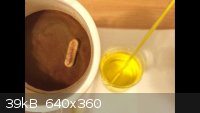Jmap science
Yet another ID of SimpleChemist-238

Posts: 40
Registered: 19-10-2013
Location: Florida
Member Is Offline
Mood: No Mood
|
|
Organic chemistry Experiments Think Tank
Finding organic chemistry experiments can be difficult. I recently purchased naphthaline and dichlorobenzene. Do you know any compounds I can make
from these. I have been doing organic chemistry for 2 months.
One compound I would like to make is naphthanol or 1-hydroxyphenol. I know if you nitrate naphthaline you can them reduce it to a amine. I have a
magnetic stirs, beakers, flasks, distillation equipment.
|
|
|
plante1999
International Hazard
    
Posts: 1936
Registered: 27-12-2010
Member Is Offline
Mood: Mad as a hatter
|
|
You can easily make the mono nitro NAPHTHALENE. You could then reduce it with tin to the amine and nitrosate it to make the diazonium salt, and
decompose it to the hydroxy compound.
Another way could be sulphation and molten base threatement to get the desired hydroxy compound.
I never asked for this.
|
|
|
Mailinmypocket
International Hazard
    
Posts: 1351
Registered: 12-5-2011
Member Is Offline
Mood: No Mood
|
|
Naphthalene can be sulfonated and used to make sodium 1 and 2 naphthalene sulfonate. Then you can go from there via alkali fusion to 1 and 2 naphthols
which are useful in various syntheses. A nice project is fiesers naphthol yellow "challenge" which can be found in google to make 6-7 dyes starting
from the naphthols. Search the forum for "synthesis of 1 and 2 naphthols" user benzylchloride did a nice write up in there.
I believe there is also a thread by magpie about the preparation of martius yellow. Just keep in mind that alkali fusions are very dangerous as you
are dealing with molten KOH, but appropriate safety gear makes it relatively safe.
Making neat dyes from mothballs, who would have thought 
|
|
|
Lambda-Eyde
National Hazard
   
Posts: 857
Registered: 20-11-2008
Location: Norway
Member Is Offline
Mood: Cleaved
|
|
I don't think fusions with molten alkali are suitable experiments for someone completely new to organic chemistry. I'm also afraid that the
dichlorobenzene (commonly found in mothballs) is relatively useless for experimentation.
This just in: 95,5 % of the world population lives outside the USA
You should really listen to ABBAPlease drop by our IRC channel: #sciencemadness @ irc.efnet.org
|
|
|
Mailinmypocket
International Hazard
    
Posts: 1351
Registered: 12-5-2011
Member Is Offline
Mood: No Mood
|
|
I missed the part about two months doing o-chem... Still, on a small scale behind a glass shield it isn't that bad. Depends on how much attention to
detail and planning ahead of time is put into it I suppose. The products are all solids which makes work up quite simple for a beginner... And the
colors are nice...just something to think about since jmap mentioned building a fume hood in another thread.
My recent martius yellow 

[Edited on 25-1-2014 by Mailinmypocket]
|
|
|
Bot0nist
International Hazard
    
Posts: 1559
Registered: 15-2-2011
Location: Right behind you.
Member Is Offline
Mood: Streching my cotyledons.
|
|
I don't have much experience doing organic chemistry, but a personal favorite is the sulfanation and nitration of recrystalized aspirin tablets all
the way to TNP. It is trivial enough that most anyone can do it, but tricky enough to provide a challenge. It is also relatively safe, as long as you
mind the temps and nitration fumes.
U.T.F.S.E. and learn the joys of autodidacticism!
Don't judge each day only by the harvest you reap, but also by the seeds you sow.
|
|
|
Paddywhacker
Hazard to Others
  
Posts: 478
Registered: 28-2-2009
Member Is Offline
Mood: No Mood
|
|
The production of naphthylamines by, for example, the reduction of nitro-naphthylenes is a very big no-no. 2-naphthylamine used to be available a
couple of generations ago but it is no longer manufactured because of its carcinogenicity.
|
|
|
papaya
National Hazard
   
Posts: 615
Registered: 4-4-2013
Member Is Offline
Mood: reactive
|
|
I wonder if there's a doable way from naphtalene to phtalic acid(anhydride), and then to go with common luminol synthesis. Will dichromate work for
oxidation?
|
|
|